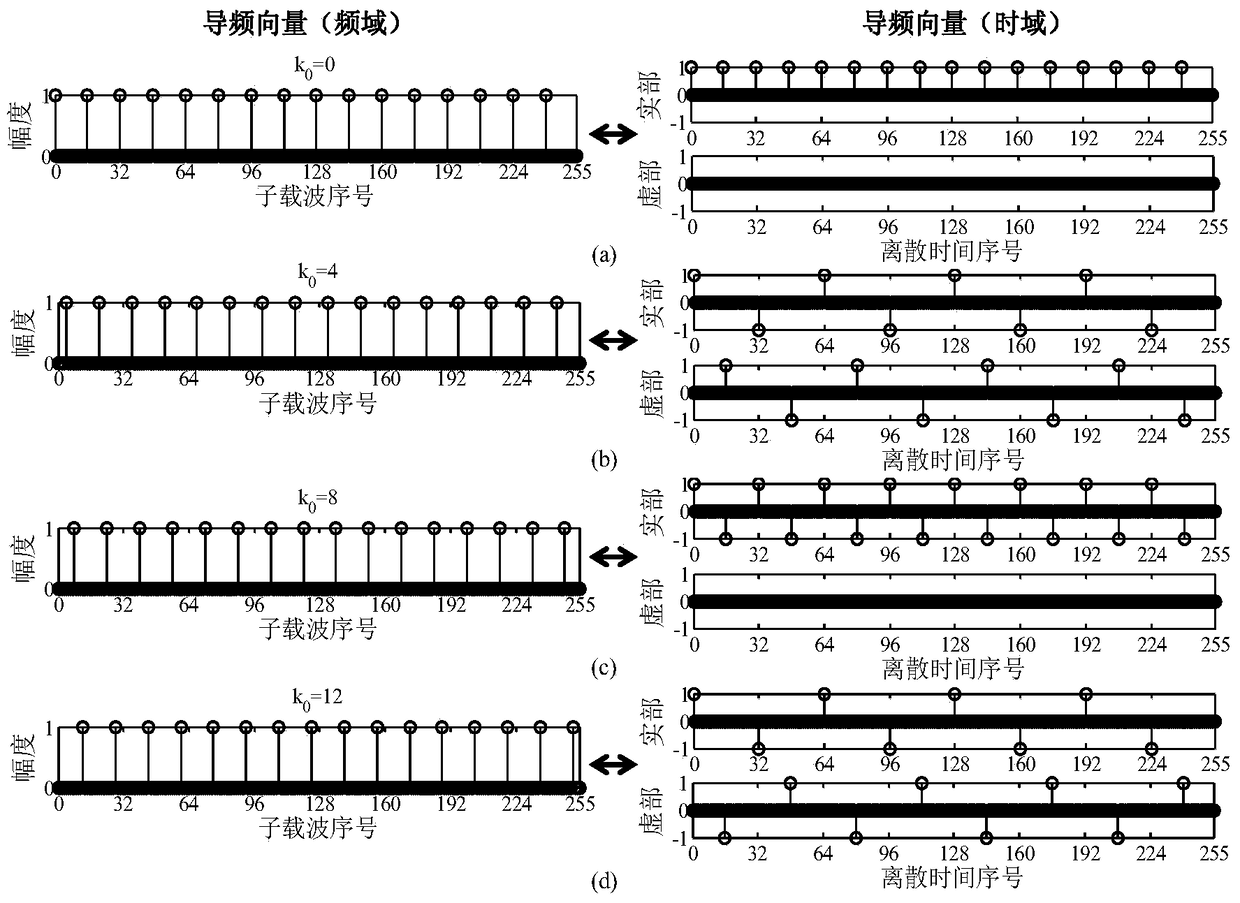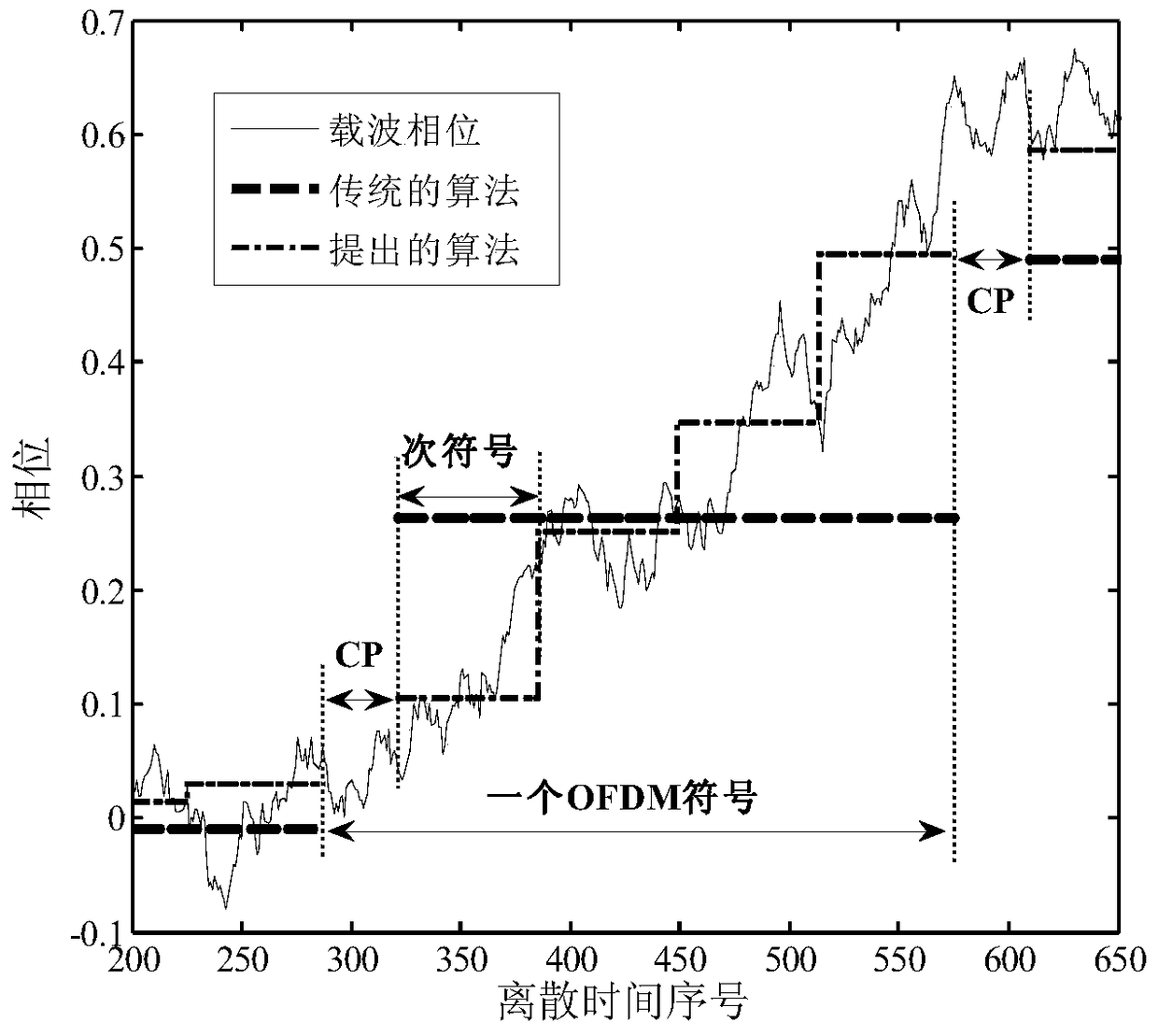A Non-Decision Aided Subsymbol Optical Phase Noise Suppression Method
A noise suppression and phase noise technology, applied in the field of optical communication, can solve problems such as algorithm performance limitations, high complexity, and high algorithm complexity
- Summary
- Abstract
- Description
- Claims
- Application Information
AI Technical Summary
Problems solved by technology
Method used
Image
Examples
Embodiment 1
[0062] The method of the invention mainly relates to the signal processing problem of the receiving end of the coherent optical orthogonal frequency division multiplexing system. Combine below figure 1 with figure 2 , to illustrate a non-decision-assisted sub-symbol optical phase noise suppression method of the present invention.
[0063] S101: Perform block processing on the time-domain signal from which the cyclic prefix has been removed, and obtain a zero-filled sub-symbol vector y b .
[0064] S102: Obtain an observation matrix C without any multiplication operation by using the characteristics of the specially designed periodic comb pilot. For available pilot structures see figure 2 .
[0065] S103: Obtain a corresponding pilot-based vector R off-line by using the training sequence of known information.
[0066] S104: Estimate the sub-symbol phase noise vector using the least squares method
[0067] S105: Complete sub-symbol phase noise compensation in the time...
PUM
 Login to View More
Login to View More Abstract
Description
Claims
Application Information
 Login to View More
Login to View More - R&D
- Intellectual Property
- Life Sciences
- Materials
- Tech Scout
- Unparalleled Data Quality
- Higher Quality Content
- 60% Fewer Hallucinations
Browse by: Latest US Patents, China's latest patents, Technical Efficacy Thesaurus, Application Domain, Technology Topic, Popular Technical Reports.
© 2025 PatSnap. All rights reserved.Legal|Privacy policy|Modern Slavery Act Transparency Statement|Sitemap|About US| Contact US: help@patsnap.com



